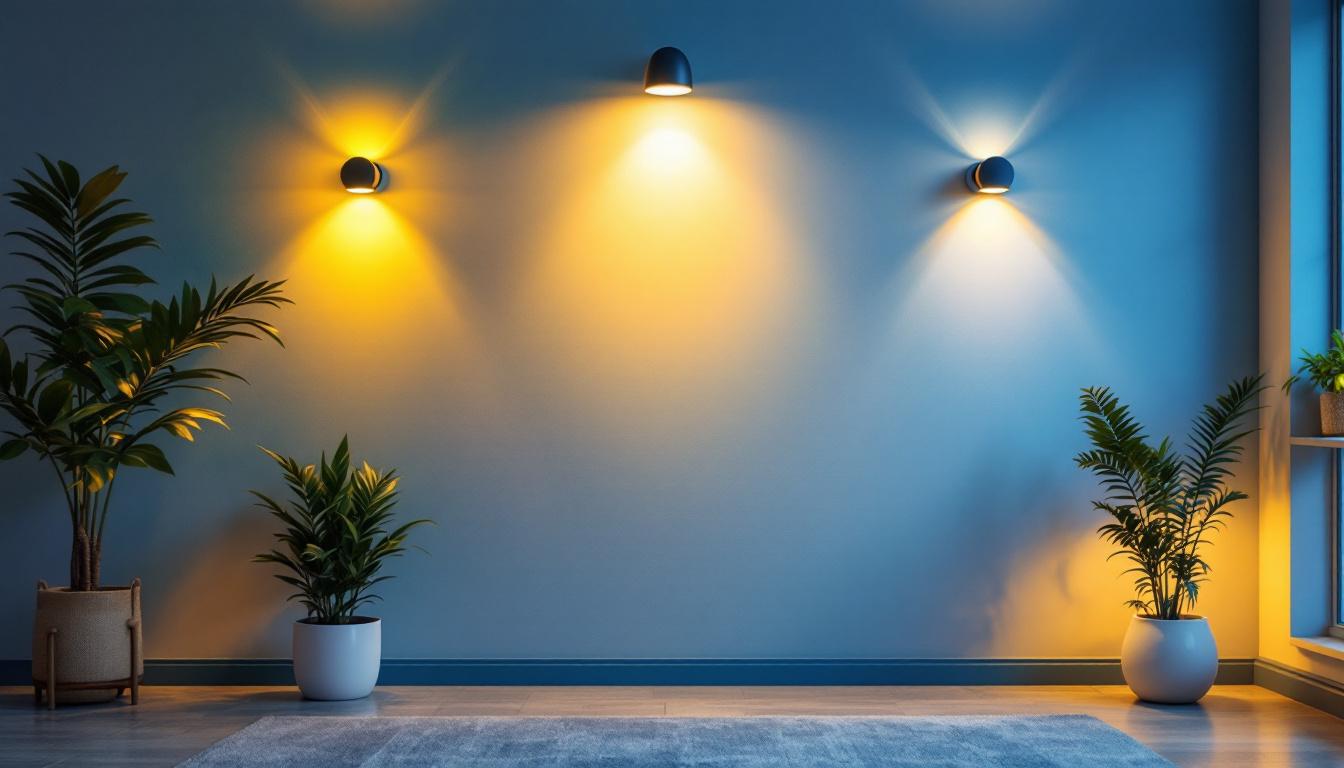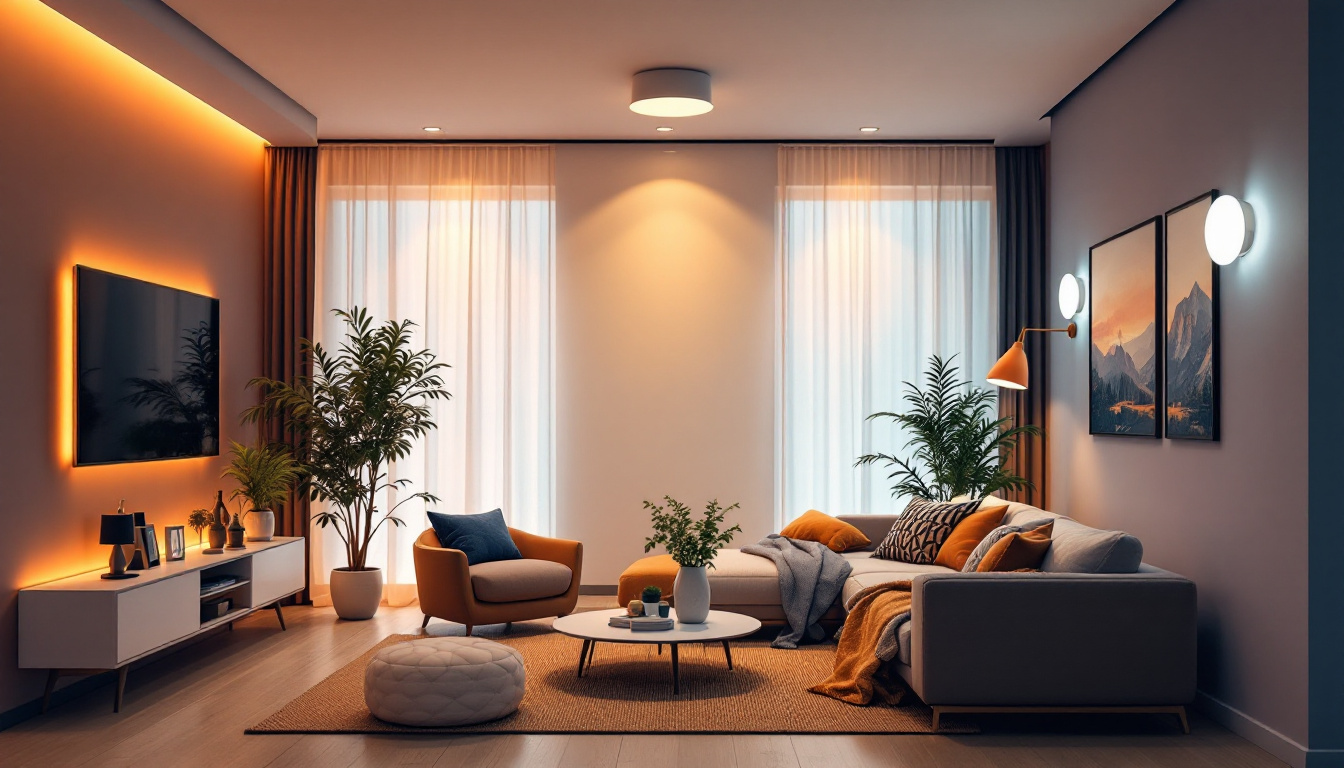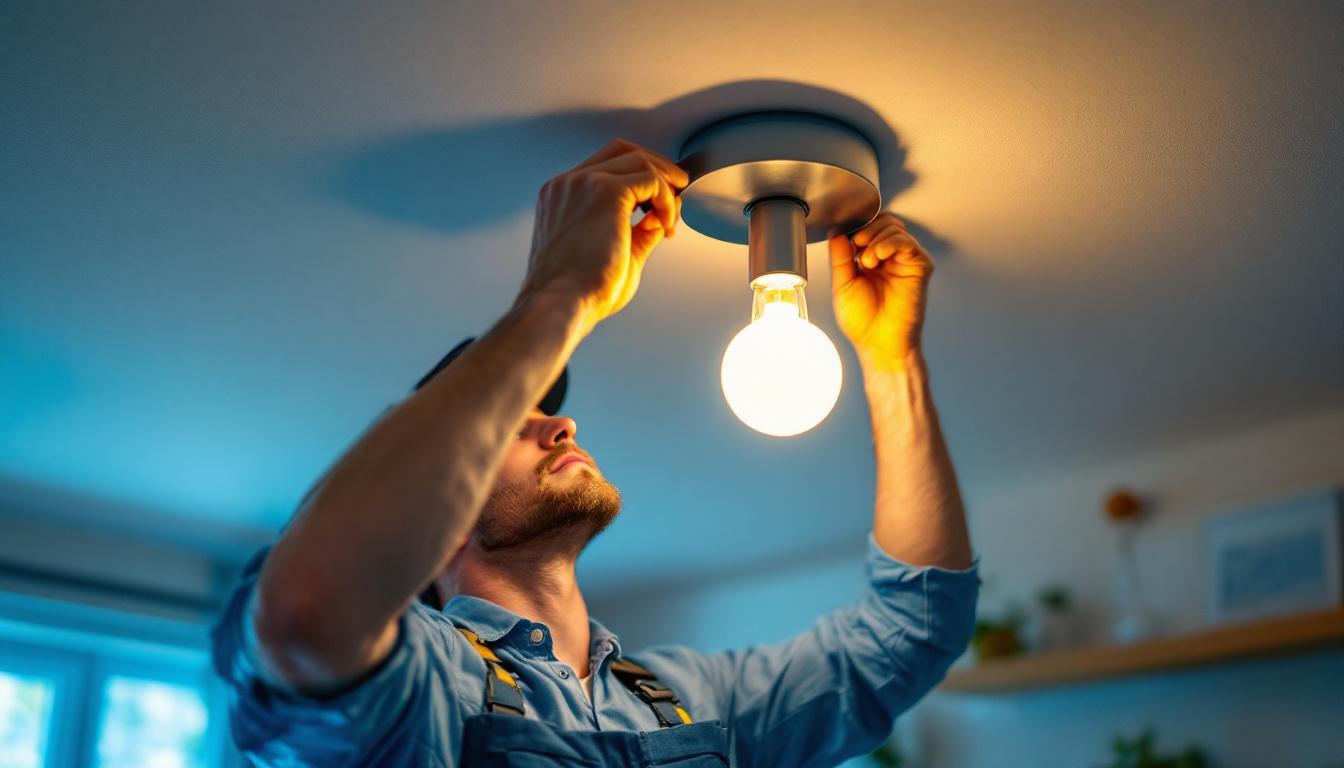
In the ever-evolving world of lighting design, LED technology has emerged as a game changer. For lighting contractors, understanding how to effectively utilize LED lights for wall applications is crucial. However, even seasoned professionals can make mistakes that compromise the effectiveness of their installations. This article delves into some of the most common pitfalls encountered by lighting contractors when working with LED lights for walls, providing insights on how to avoid them.
Before diving into the common mistakes, it’s essential to grasp the fundamentals of LED technology. LEDs, or Light Emitting Diodes, are semiconductor devices that emit light when an electric current passes through them. Unlike traditional incandescent bulbs, LEDs are more energy-efficient and have a longer lifespan, making them an attractive option for various applications. Their compact size and versatility allow for innovative designs in both residential and commercial settings, enabling lighting solutions that were previously unimaginable.
Moreover, the environmental impact of using LEDs is significantly lower than that of traditional lighting options. With a lifespan that can exceed 25,000 hours, LEDs reduce the frequency of replacements, thereby minimizing waste. Additionally, they do not contain harmful substances like mercury, which is found in some fluorescent bulbs, making them a safer choice for both users and the environment.
LED lights offer numerous advantages, including lower energy consumption, reduced heat output, and a wide range of color options. These benefits make them ideal for wall installations, where aesthetics and functionality are paramount. The ability to choose from a spectrum of colors allows for creative lighting designs that can enhance the mood of a space, whether it’s a warm, inviting glow for a cozy living room or bright, vibrant lighting for a modern office. However, the unique characteristics of LEDs require careful consideration during the installation process.
Additionally, the dimming capabilities of LED lights are often overlooked. Unlike traditional bulbs, which may flicker or fail to dim properly, many LED products are designed to work seamlessly with compatible dimmer switches. This feature not only contributes to energy savings but also allows users to create the perfect ambiance for any occasion. Understanding the compatibility of LEDs with existing fixtures and dimmers is crucial for maximizing their potential and ensuring a satisfying user experience.
Despite their advantages, many contractors misunderstand the operational principles of LEDs. For instance, the perceived brightness of an LED is often confused with its actual lumen output. Understanding these nuances is essential for achieving the desired lighting effect. Many consumers may be drawn to the wattage of a bulb, mistakenly believing that higher wattage equates to brighter light. In reality, LED technology allows for lower wattages to produce the same or even greater lumen output compared to incandescent bulbs.
Another common misconception is that all LEDs are created equal. The quality of LED products can vary significantly based on factors such as the materials used, the manufacturing process, and the design of the fixture itself. This variability can affect not only the brightness and efficiency of the light but also its color rendering index (CRI), which measures how accurately colors are displayed under the light. A higher CRI is crucial for applications where color accuracy is important, such as in art studios or retail environments. Therefore, it is vital for contractors and consumers alike to research and select high-quality LED products to ensure optimal performance and satisfaction.
Even experienced contractors can overlook critical aspects when installing LED lights for walls. Below are some of the most frequent mistakes and how to avoid them.
One of the primary errors contractors make is failing to plan and design the lighting layout adequately. A well-thought-out design considers the purpose of the space, the desired ambiance, and the specific characteristics of the LED lights being used.
Without proper planning, contractors may end up with uneven lighting, shadows, or overly bright spots that detract from the overall aesthetic. It is vital to take measurements and create a lighting plan that aligns with the client’s expectations and the functional requirements of the space. Additionally, incorporating a variety of lighting techniques, such as wall washing or accent lighting, can enhance the visual appeal and functionality of the area. By considering the interplay of light and shadow, contractors can create a more dynamic environment that highlights architectural features and artwork.
Color temperature plays a significant role in how LED lights affect a space. Measured in Kelvin (K), color temperature can range from warm (around 2700K) to cool (up to 6500K). Contractors often overlook this aspect, leading to mismatched lighting that can create an uninviting atmosphere.
When selecting LEDs for wall installations, it is essential to consider the intended mood. Warmer temperatures are typically more inviting for residential spaces, while cooler temperatures may be suitable for commercial areas. Understanding the psychological effects of color temperature can greatly enhance the overall design. For instance, warmer tones can promote relaxation and comfort, making them ideal for bedrooms and living areas, while cooler tones can enhance focus and productivity in workspaces. Furthermore, using adjustable color temperature LEDs can provide versatility, allowing clients to change the ambiance of a room according to their needs or time of day.
Dimming capabilities are another crucial factor that contractors often neglect. Many LED fixtures are compatible with dimmers, but not all dimmers work well with every LED product. Using incompatible dimmers can lead to flickering, reduced lifespan, or even complete failure of the LED lights.
Before installation, it is essential to verify the compatibility of the LED fixtures with the chosen dimming system. This not only ensures optimal performance but also provides clients with the flexibility to adjust lighting levels according to their preferences. Moreover, incorporating smart dimming solutions can elevate the user experience, allowing for remote control and scheduling of lighting through mobile apps. This modern approach not only enhances convenience but also contributes to energy savings, as users can easily manage their lighting usage based on their daily routines.
Installation is a critical phase where mistakes can lead to significant issues down the line. Here are some common installation errors that contractors should be aware of.
The height at which LED lights are mounted can drastically affect their performance and appearance. Contractors sometimes install lights too high or too low, which can lead to inadequate illumination or an unbalanced look.
To determine the optimal mounting height, consider the specific application and the type of LED fixture being used. For wall-mounted fixtures, a general guideline is to install them at eye level or slightly above to achieve the best visual effect.
Wiring and power supply considerations are often underestimated during the installation process. LEDs require a specific voltage and current to operate efficiently. Using incorrect wiring can lead to flickering, reduced brightness, or even damage to the fixtures.
Contractors must ensure that the power supply is adequate for the total wattage of the LED fixtures being installed. Additionally, it is crucial to use high-quality wiring that can handle the electrical load without overheating.
While LEDs generate less heat than traditional bulbs, they still produce some heat that needs to be dissipated effectively. Failing to account for heat dissipation can lead to overheating, which may shorten the lifespan of the LEDs.
When installing LED lights, ensure that there is adequate ventilation and that the fixtures are not enclosed in spaces that trap heat. This consideration is particularly important for recessed lighting installations.
After the installation is complete, there are still several factors to consider to ensure the longevity and effectiveness of the LED lights.
LED lights are known for their durability, but regular maintenance is still essential to keep them functioning optimally. Dust and debris can accumulate on fixtures, reducing their brightness and efficiency over time.
Contractors should advise clients on the importance of regular cleaning and maintenance schedules. This not only ensures that the lights perform well but also extends their lifespan, providing better value for the investment.
Monitoring the performance of LED lights after installation is crucial for identifying any potential issues early on. Contractors should educate clients on what to look for, such as flickering or color changes, which can indicate a problem.
By keeping an eye on performance, contractors can address issues promptly, ensuring that the lighting remains effective and aesthetically pleasing. This proactive approach can also enhance client satisfaction and build trust in the contractor’s expertise.
Finally, educating clients on how to use their LED lighting systems effectively can prevent misuse and ensure optimal performance. Many clients may not be familiar with the capabilities of their new lighting, leading to suboptimal usage.
Contractors should take the time to explain the features of the LED lights, including dimming options, color temperature adjustments, and maintenance requirements. This education empowers clients to make the most of their lighting systems, ultimately leading to a more satisfying experience.
In conclusion, while LED lights offer numerous benefits for wall applications, lighting contractors must navigate various challenges to ensure successful installations. By avoiding common mistakes related to planning, installation, and post-installation care, contractors can enhance the effectiveness of their projects and improve client satisfaction.
Understanding the intricacies of LED technology and its application in wall lighting is essential for any contractor looking to thrive in the competitive lighting industry. With careful consideration and attention to detail, contractors can harness the full potential of LED lights, creating beautiful and functional spaces that meet the needs of their clients.
Ready to elevate your lighting installations and avoid the common pitfalls discussed in this article? Choose LumenWholesale for your next project and experience the difference quality lighting can make. Our extensive selection of spec-grade LED lights ensures you have access to the best products for any wall application. With unbeatable wholesale prices and the convenience of free shipping on bulk orders, you can trust that you’re getting premium lighting at the best value. Don’t let inflated markups or subpar products compromise your work. Visit LumenWholesale today and bring superior lighting to your clients with confidence.

Discover how LED lights can transform your home into an energy-efficient haven.

Discover the common pitfalls lighting contractors face with simple ceiling lights and learn how to avoid them.

Discover how lightweight suspended ceilings can transform your lighting projects by offering enhanced aesthetics, improved acoustics, and energy efficiency.

Discover the advantages of long light bulbs for lighting contractors in this insightful article.